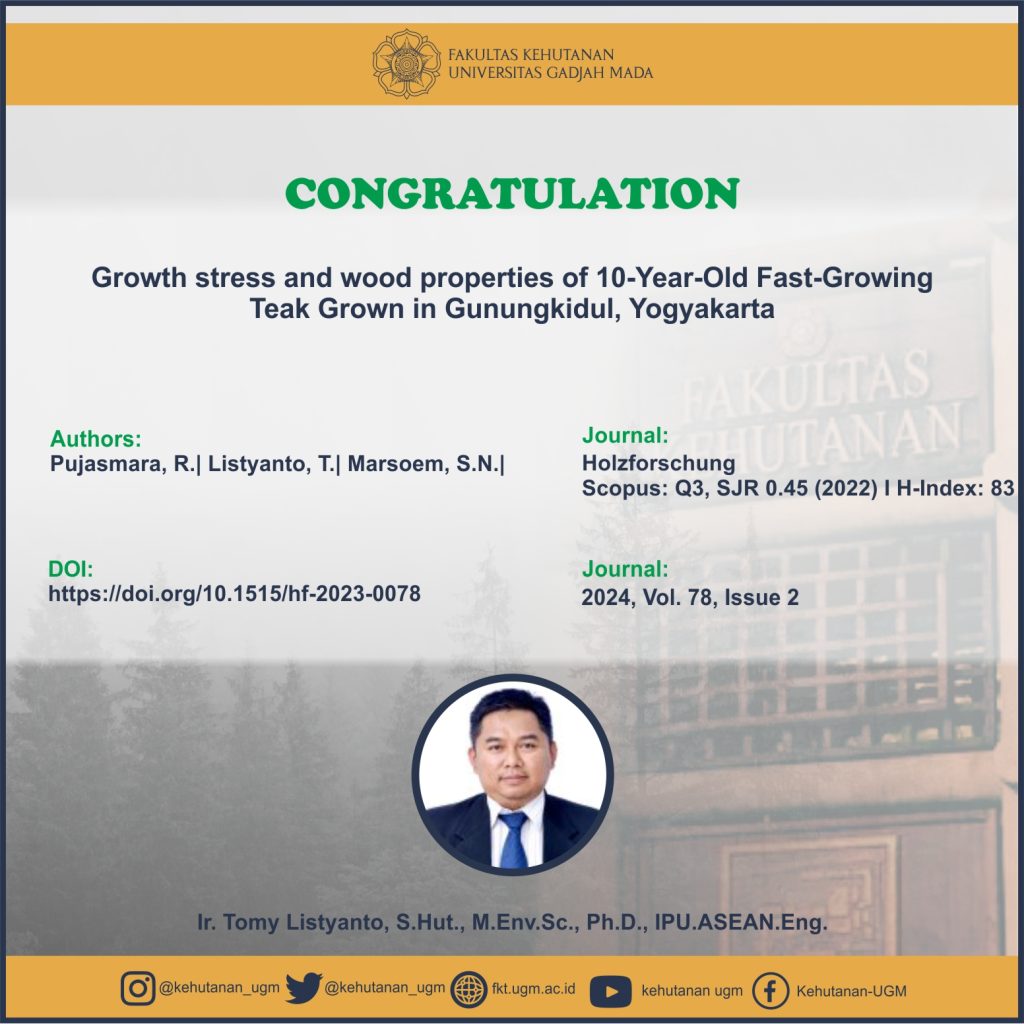
Abstract
The establishment of fast-growing teak plantations in Indonesia provides opportunities for shorter harvesting periods. However, it also poses challenges on wood utilization due to juvenility and growth stress-related defects. This study investigated growth stress levels and some wood properties of 10-year-old fast-growing teak grown in Gunungkidul Regency, Yogyakarta. The strain gauge method was used to measure longitudinal surface released-strains (LRS), tangential surface released-strains (TRS), and longitudinal internal residual strains (IRS). Wood specimens were also collected near each strain measurement point for the analysis of wood properties. The results showed LRS values ranging from −1243 to 320 με, TRS values ranging from −779 to 382 με, and IRS values ranging from −589 to 786 με. Meanwhile, radial variations in fiber length, modulus of elasticity, and lignin content were observed. Significant correlations were found between IRS values and microfibril angle, fiber length, modulus of elasticity, lignin content, and hemicellulose content, while no significant correlations were observed between LRS and TRS values and wood properties. These findings suggest a moderate level of growth stress. Additionally, the results also indicate that this 10-year-old fast-growing teak is still in the juvenile stage. Therefore, its utilization should be performed with caution.
SDGs:
1. SDGs 4:Quality Education
2. SDGs 8:Decent Work and Economic Growth
3. SDGs 12:Responsible Consumption and Production
4. SDGs 13:Climate Action
5. SDGs 15:Life on Land
Link Dokumen:
Download
